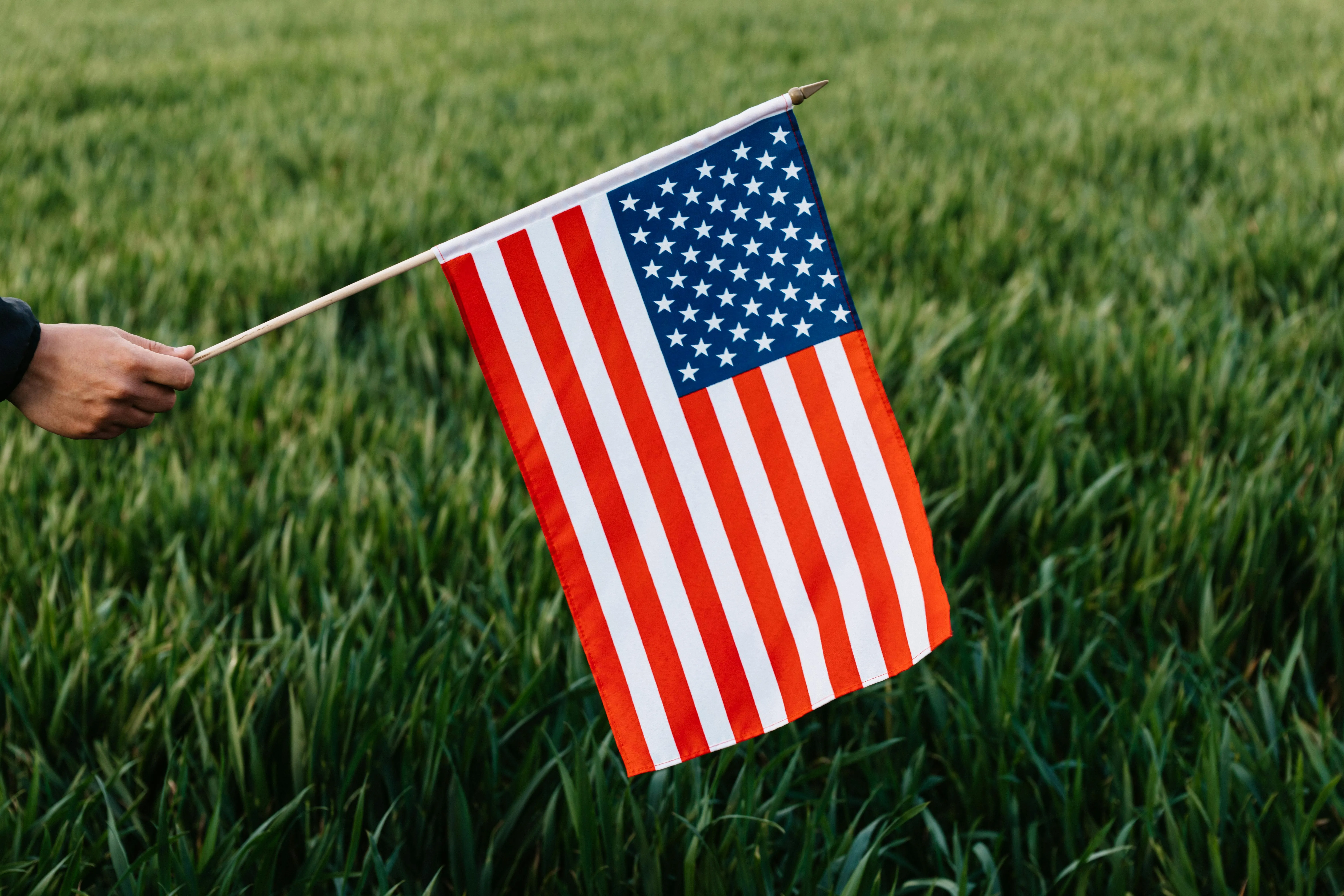Standard Dimensions of the US Flag

The American flag, also known as the flag of the United States of America, holds a deep significance for the nation and its citizens. Its iconic design and symbolic elements evoke feelings of patriotism, unity, and pride.
In this article, we will explore the standard dimensions of the US flag and delve into its rich history and symbolism. We will also provide guidelines for the proper display of the flag, both indoors and outdoors.
Brief History of the US Flag
The history of the American flag dates back to the birth of the United States. The first version of the flag, known as the "Grand Union Flag" or the "Continental Colors," was adopted in 1776. It featured thirteen alternating red and white stripes representing the original thirteen colonies, along with the British Union flag in the canton. It was raised by George Washington in 1776 and signified a nation on the brink of claiming its independence.

Photo By Hoshie, Yaddah. - Made by Hoshie
This flag is believed to be designed by New Jersey Congressman Francis Hopkinson. The first version of US Flag has many names such as - "Grand Union Flag", "Continental Colors," "Congress Colors," "Cambridge Flag," and the "First Navy Ensign."
Over the years, the design of the flag evolved. In 1818, a law was enacted to establish the flag with thirteen alternating red and white stripes, with a white star added for each state in the union. Therefore, the design changed with addition of each new state in union.
Currently, the flag displays 13 stripes (7 red stripes with 6 white ones) and 50 stars, symbolizing the original thirteen colonies and the current states of the union, respectively.
The Standard Dimensions of the US Flag
The US flag follows specific dimensions outlined by executive order. It maintains a length-to-height ratio of 10:19. Also, its dimensions should be in direct proportion to the height of the flagpole it sits on.

Photo by Brett Sayles on Pexels
Typical flag sizes range from 3 feet by 5 feet to 5 feet by 8 feet, but larger flags can be as big as 20 feet by 38 feet.
To determine the appropriate size, consider the height of the flagpole. Here are some common flag sizes and their corresponding flagpole heights:
| Dimensions | Ideal For | Flagpole Height |
|---|---|---|
| 3x5 feet | Displaying Outside Homes | 20 feet |
| 4x6 feet | Public Display | 25 feet |
| 5x8 feet | Public Display Flag | 30 feet |
| 6x10 feet | Public Events | 35 feet |
In some cases, flags displayed on flagpoles can be as large as 20 feet by 38 feet, with the flagpole reaching a towering height of 100 feet. How big is 100 feet? Well, for better guessing it is 10 times the length of 10 feet.
These larger flags are usually reserved for official government buildings and special occasions. Here are some other less commonly used flag sizes and their flagpole height.

Image by Karolina Kaboompics from Pexels
It is important to ensure that the flag's size corresponds appropriately to the height of the flagpole. This ensures a visually pleasing display that respects the flag's proportions and allows for proper visibility.
Symbolism of the 13 Stripes
The 13 alternating red and white stripes on the American flag hold great symbolism. These stripes represent the original thirteen colonies that fought for independence from British rulers. Each stripe signifies the valor, resilience, and sacrifice of the early American settlers. The thirteen stripes serve as a reminder of the nation's foundation and the courage of its founders.
Symbolism of the 50 Stars
The 50 stars on the US flag symbolize the current state of the union. The stars are arranged in a field of blue, known as the canton, which signifies the unity and solidarity of the United States. The design of the stars has evolved over time to accommodate the growing number of states. The stars embody the spirit of progress, expansion, and the inclusion of new territories into the American fabric.
This article is exclusively written for MeasurementOf.
Symbolism of the Colors

Photo by Karolina Kaboompics on Pexels
The three colors of the American flag—red, white, and blue—carry their own symbolism. Red represents valor and bravery, reminding us of the sacrifices made by those who fought for the nation's freedom. It embodies the indomitable spirit of the founding fathers and all those who have defended the United States throughout history.
White, the color of purity and innocence, symbolizes the lofty ideals upon which the United States was founded. It signifies the commitment to truth, justice, and equality which are fundamental principles of the nation. The white color on the flag exemplifies the nation's aspiration for a society that upholds moral integrity, fairness, and the pursuit of liberty for all its citizens.
Blue, a symbol of vigilance, perseverance, and justice, occupies a special place on the American flag. It represents the eternal spirit of the American people, ever watchful in safeguarding the nation's values and freedoms. Blue also reflects the unity and solidarity of the states, capturing the collective strength and shared purpose of its diverse population.
Proper Display of the US Flag
Respecting the significance of the American flag requires knowing how to display it properly, both indoors and outdoors. It ensures that the flag is showcased with grace. Let's explore the guidelines for displaying the flag with honor and pride.

Photo by Andrew DeGarde on Pexels
Displaying the Flag Indoors
When it’s about displaying the flag indoors, it should be placed in a position of honor. Guidelines for displaying the flag indoors include:
- Placing the flag in an area where it receives proper respect and attention, such as a prominent wall or corner of a room.
- Mounting the flag on a staff or pole, ideally with the stars facing towards the front.
- Avoiding placing any objects above the flag that may diminish its prominence or obscure its view.
Displaying the Flag Outdoors
While displaying the American flag outdoors, certain guidelines should be followed to ensure proper respect and visibility. These include:
- Choosing an appropriate flagpole or mount that meets the flag's size requirements and complies with local regulations.
- Raising the flag briskly and lowering it ceremoniously, preferably at sunrise and sunset respectively.
- Ensuring the flag remains in good condition, free from tears or fading, and properly illuminated during nighttime display.
Proper positioning of the flag outdoors also requires attention to detail. The flag should ideally be flown on a sturdy flagpole, securely mounted on the ground, or attached to a building. It should be hoisted to the peak of the flagpole unless circumstances dictate otherwise, such as during times of mourning.
Conclusion
The US flag represents the unity, history, and values of the United States of America. Understanding the standard dimensions and symbolism of the flag helps us appreciate its significance. By adhering to proper guidelines for displaying the flag, both indoors and outdoors, we can pay tribute to the nation and honor the sacrifices made by its citizens. Let us proudly raise the flag and embrace the spirit of patriotism and unity it embodies.




